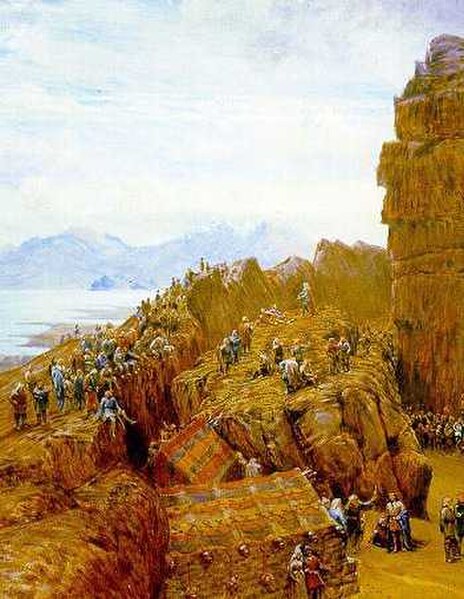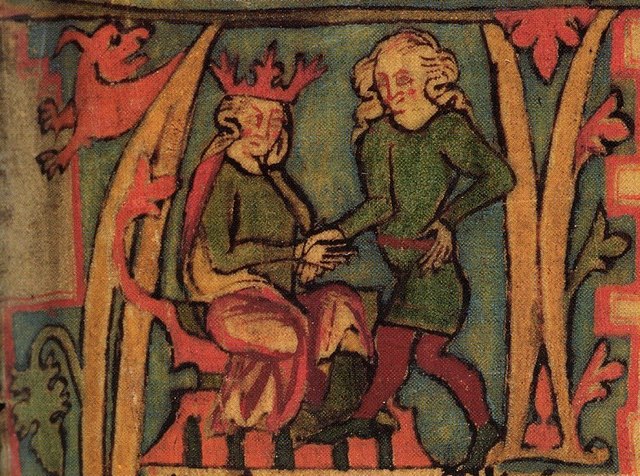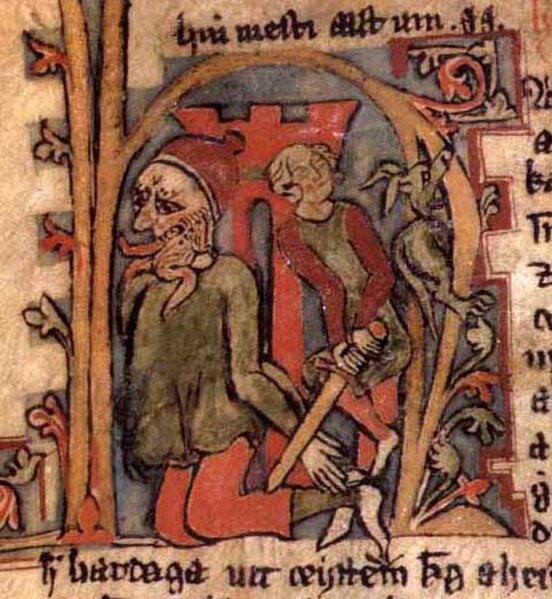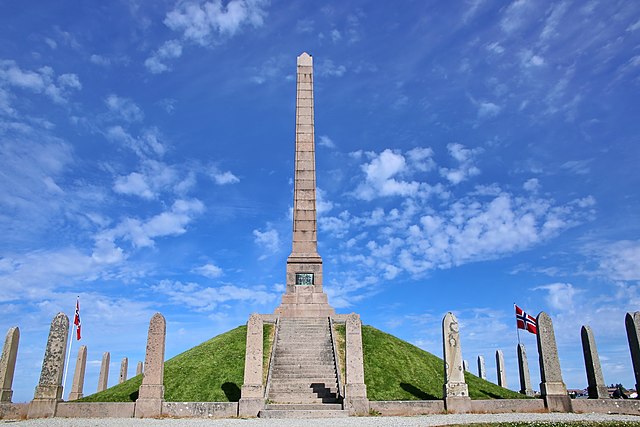The settlement of Iceland is generally believed to have begun in the second half of the ninth century, when Norse settlers migrated across the North Atlantic. The reasons for the migration are uncertain: later in the Middle Ages Icelanders themselves tended to cite civil strife brought about by the ambitions of the Norwegian king Harald I of Norway, but modern historians focus on deeper factors, such as a shortage of arable land in Scandinavia. Unlike Great Britain and Ireland, Iceland was unsettled land and could be claimed without conflict with existing inhabitants.
Norsemen landing in Iceland in 872
19th century painting showing a romanticised view of 11th century Alþingi session
Ingólfur commands his high-seat pillars to be erected
Harald Fairhair was a Norwegian king. According to traditions current in Norway and Iceland in the eleventh and twelfth centuries, he reigned from c. 872 to 930 and was the first King of Norway. Supposedly, two of his sons, Eric Bloodaxe and Haakon the Good, succeeded Harald to become kings after his death.
Harald Fairhair (left) in an illustration from the fourteenth-century Flateyjarbók.
Harald Haarfager later in his life
The 1872 monument to Harald at Haraldshaugen.
Haraldshaugen Monument (June 2018)







